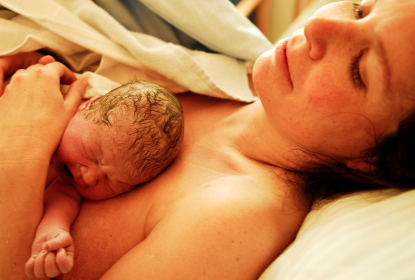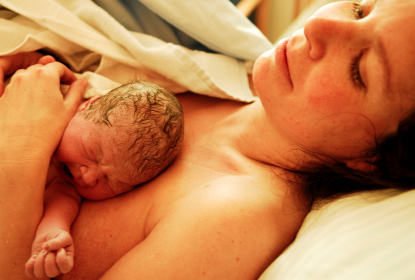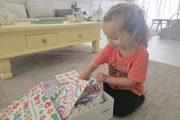Ask the Childbirth Educator: Third Stage Labour – Placenta


With my three natural births I had ‘trouble’ with the placenta coming out. I am not sure if it was because it just didn’t come out in the time frame they set or if it is really an issue if it is not out in an hour?
Jaimee-Lee
Unfortunately, the term “natural birth” is a bit of an oxymoron in most hospital settings. Even if you are able to ward off well-meaning midwives and doctors who really think that you’d be better off with an epidural or a raft of other interventions, the fact is, birthing women are on the clock from the minute they are admitted to hospital.
The third stage of labour – the delivery of the placenta – is almost always ‘managed’ and not physiological. That means that your caregivers will give you a shot of Syntocinon (the synthetic version of our body’s natural hormone, oxytocin) which although reduces the risk of postpartum haemorrhage, also causes the uterus to contract, thereby encouraging the placenta to come away from the uterine wall and be delivered. It is also possible that your caregiver will tug gently on the umbilical cord periodically to see if they can speed up the removal of the placenta.
Following the birth of your baby, hospitals will want to ensure that the placenta is delivered anywhere from 10-30 minutes later. It would be unusual for them to allow the placenta to remain inside the uterus for up to an hour following birth.
I’d be curious to know whether or not your caregivers delayed cord clamping with each of your births.
The disadvantages of early clamping were recognised as far back as 1801, when Erasmus Darwin wrote: “Another thing very injurious to the child is the tying and cutting of the navel string too soon; which should always be left till the child has not only repeatedly breathed but till all pulsation in the cord ceases. As otherwise the child is much weaker than it ought to be, a part of the blood being left in the placenta which ought to have been in the child”.
Today, we know from studies that the placenta retains approximately one third of the newborn’s blood volume and therefore, if the cord is cut too early, the baby is deprived of a significant portion of its blood supply.
When our bodies are allowed to work as Mother Nature intended, oxytocin creates strong uterine contractions which continue at regular intervals. The uterine muscle fibres shorten, or retract, with each contraction, leading to a gradual decrease in the size of the uterus, which helps to ‘shear’ the placenta away from its attachment site.
For the new mother, the third stage is a time of reaping the rewards of her labour. Skin-to-skin contact and the baby’s first attempts to breastfeed further augment maternal oxytocin levels, strengthening the uterine contractions that will help the placenta to separate and the uterus to contract down. In this way, oxytocin acts to prevent haemorrhage, as well as to establish, in concert with the other hormones, the close bond that will ensure a mother’s care and protection, and thus her baby’s survival.
Hopefully, as more women become aware of the advantages of physiological third stage, they will demand that this crucial stage of labour and birth is also left to nature.
Tanya Strusberg
Lamaze Certified Childbirth Educator
Tanya was born and raised in Hong Kong to Australian parents. She moved to Australia in 1995 and worked for a number of years as an arts marketing specialist before moving to Israel in 2006.
Tanya trained to become a Lamaze Certified Childbirth Educator (LCCE) in Israel through the Douglas College Perinatal Program in Vancouver, Canada. She studied with renowned childbirth educator Rachelle Oseran BA, FACCE, LCCE, CD(DONA) who has over 29 years of experience in the field of perinatal education.
Tanya and her husband moved to Melbourne with their two children Liev and Amalia in February 2012. As the only LCCE in Australia, Tanya is excited to be pioneering Lamaze childbirth education here and looks forward to helping pregnant women build their confidence for what is undoubtedly the most awe-inspiring moment of a woman¹s life becoming a mother!










